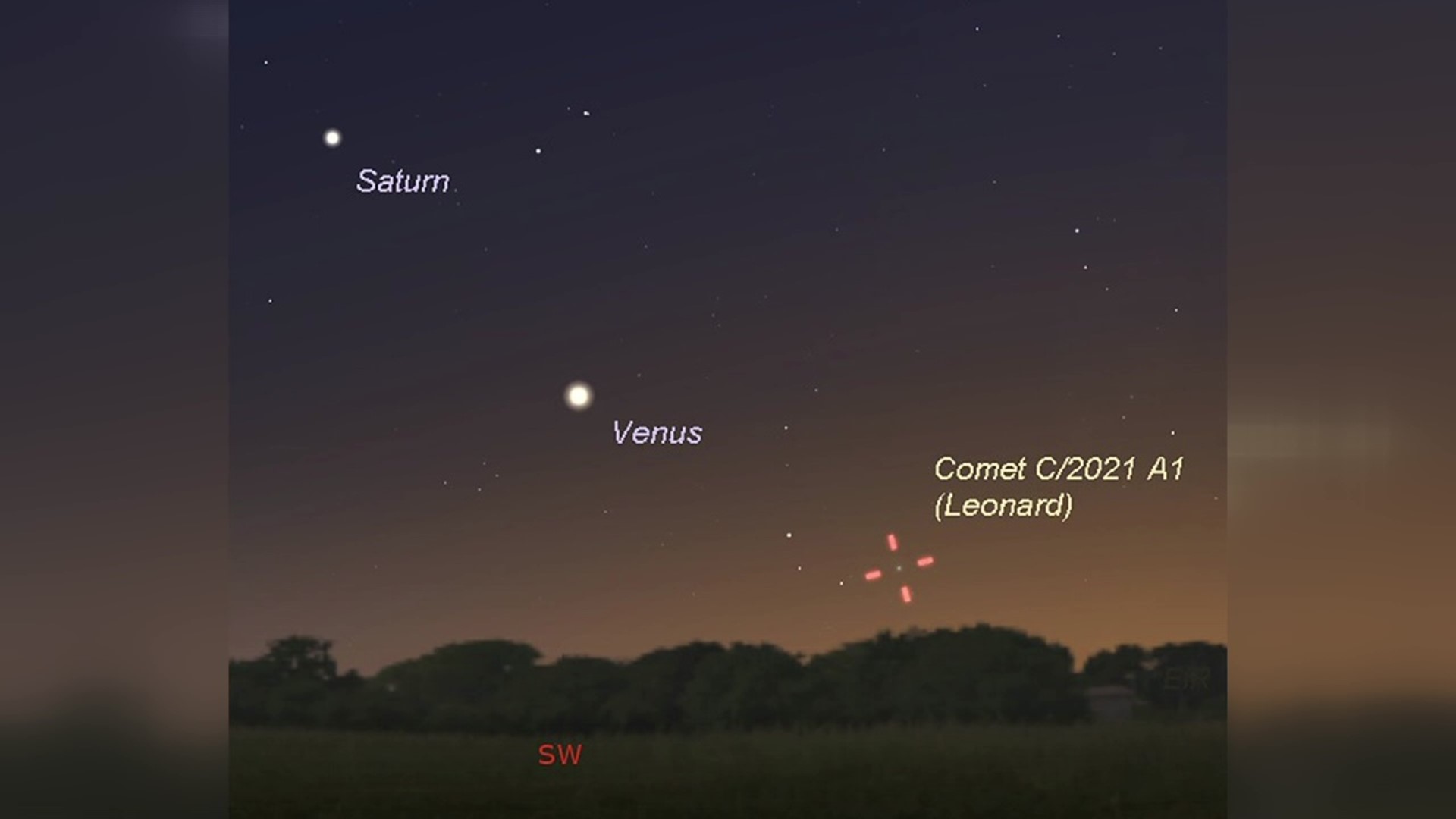A Christmas comet is visiting our solar system and a satellite caught some breathtaking images of it zooming by. There's still a chance for people on Earth to get a glimpse before it leaves -- or disintegrates.
Comet Leonard was discovered in January and is set to make its closest pass to the sun on January 3, 2022 -- about 56 million miles from the sun, the European Space Agency said. That's a little more than half the distance between the Earth and the sun.
Leonard already made its closest approach to Earth on Dec. 12 at a distance of 21.7 million miles. But as the comet gets closer to the sun, NASA said it could have large outbursts of gas and dust, making it brighter and easier to see from Earth.
The NASA and ESA Solar Orbiter Heliospheric Imager (SoloHI) caught several images of Leonard last week as it moved into its view. The images were strung together into a video. It shows Leonard moving diagonally from right to left across the screen with the Milky Way galaxy in the distance.
Adding to the stunning imagery is that Venus and Mercury appear in the top right of the screen, with Venus getting brighter as it also moves from left to right.
Watching the video, it appears as if Leonard's tail is ahead of its core of rock and ice. Here's how ESA explains that.
"When SoloHI recorded these images, the comet was approximately between the Sun and the spacecraft, with its gas and dust tails pointing towards the spacecraft. Toward the end of the image sequence, our view of both of the tails improves as the viewing angle at which we see the comet increases, and SoloHI gets a side-on view of the comet," ESA said.
How to see Comet Leonard for yourself
Time is running out for amateur skywatchers who want to see Leonard for themselves. Go outside after sunset and have some good binoculars or a telescope handy.
"It will skim across the west-southwestern horizon between now up until around Christmastime," said Gregory Leonard, the University of Arizona researcher and astronomer who discovered the comet. He warns that being so close to the horizon may make it difficult to spot, but the possibility of material scattering from the comet as it moves closer to the sun may still make it visible.
"Find yourself a dark sky with a good view of the horizon, bring binoculars and I think you may be rewarded," Leonard said.
ESA said if the comet doesn't disintegrate, it will fly back out to interstellar space and never visit us again.

